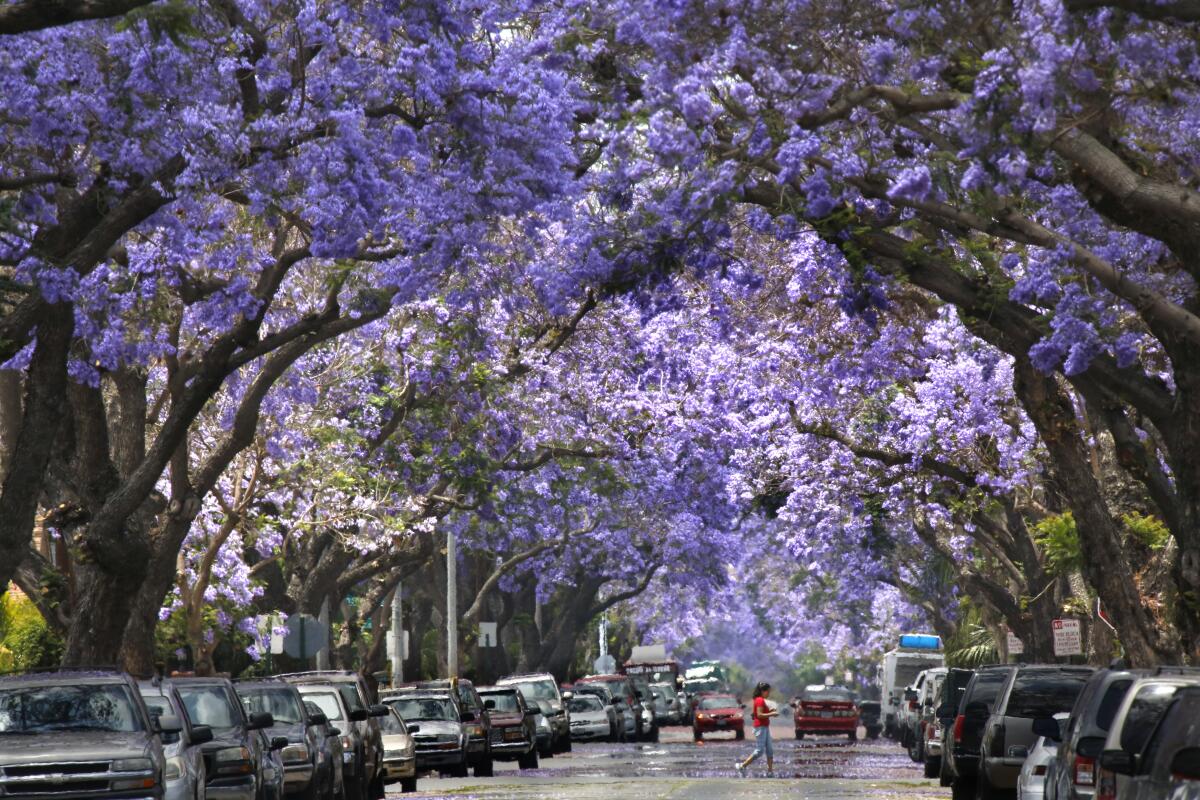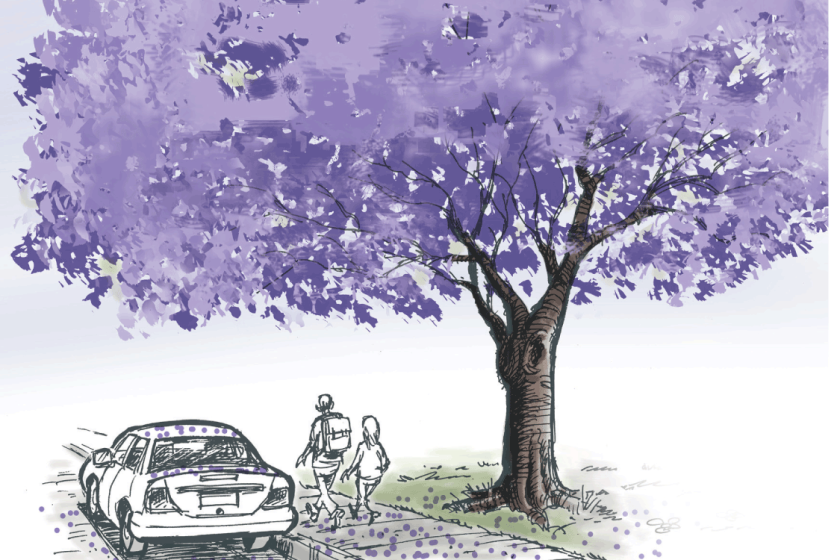Why haven’t all the jacarandas bloomed yet? When will purple reign again in L.A.?

- Share via
Angelenos who adore the flamboyant flowers of jacarandas have been disappointed this spring, as stark branches remained flowerless against an often-gloomy sky.
While many trees have yet to explode into full bloom, anxious jacaranda lovers need not worry, say plant experts. Most of the time, jacaranda trees flower between late April and mid-June, and this year it’s looking like more will be blasting “Purple Rain” like a lowrider with a trunk full of subwoofers in the coming weeks. While springtime marks the normal range, the Huntington Library, Art Museum and Botanical Gardens has recorded flowering dates as early as Jan. 8 in 2010 and as late as July 7 in 2016, says Tim Thibault, curator of woody plant materials.
Within the last week, jacaranda trees across Los Angeles County have been spotted with everything from barren branches to patchy flower tips to scant purple coloring. While some trees in Highland Park, Silver Lake and Santa Monica looked sparse, others in Hollywood, Culver City and Long Beach had more purple — a sign of hope for those on jacaranda watch.
The cold, wet winter and spring had even seasoned observers wondering where the billowing jacaranda flowers were. Lower-than-normal temperatures hadn’t deterred the wildflower superbloom — so why the perceived hold-up with many jacarandas?

One factor is the difference between how tropical trees and spring wildflowers cue blossoming, explains Gretchen North, biology professor at Occidental College. Increasing daylight matters most to wildflowers, says North, whereas heat is the critical factor for tropical trees, which include the Argentina-native jacarandas.
Heat triggers a hormone called florigen that makes the jacaranda trees flower, North explains. Florigen travels from the leaves through the tree’s circulatory system to deliver the “go” signal to buds that have been waiting in the wings since last summer. But the hormone isn’t alone in pulling the blankets from dormant buds and shouting, “Wake up!” That job also is performed by signaling proteins, florigen’s messengers so to speak.
When spring’s warm sun slackens winter’s chilly grip, Angelenos count on their streets being punctuated with neon purple jacaranda trees — as much a trademark of this region as the cherry blossoms in Washington, D.C.
How florigen stimulates the process of making a flower is “still an active research field,” says Lawren Sack, professor of ecology and evolutionary biology at UCLA. Sack cautions further that the entire flowering sequence in jacarandas and similar trees is “not completely understood.” One especially intriguing piece of the puzzle is how trees store and use information about previous seasons when flowering, in addition to current temperatures.
“It’s still kind of mysterious, and important to understanding how plants respond to the changing climate,” Sack says.
So whether you love or hate jacarandas, they’re on their way. And in true L.A. fashion, their arrival time is flexible.
More to Read
Sign up for The Wild
We’ll help you find the best places to hike, bike and run, as well as the perfect silent spots for meditation and yoga.
You may occasionally receive promotional content from the Los Angeles Times.











